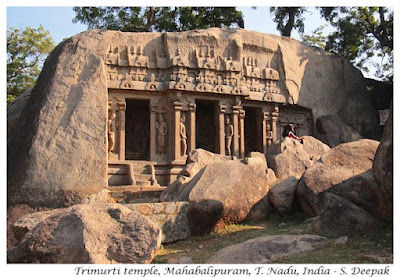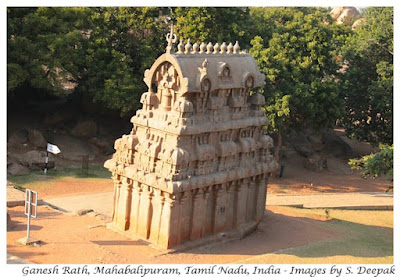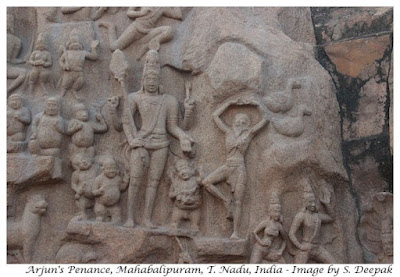My first 4 posts introduced some basic concepts related to emancipatory research (ER). With this 5th post, we are now going to look at more practical aspects of ER – how to plan an ER. (Click on the images for a bigger view)
Selecting the Research Themes
Identifying the research questions or the themes is fundamental for ER. The research questions should be such that they promote empowerment. ER needs to identify problems that are felt as important by the marginalised groups themselves.For promoting empowerment, the research needs to focus on those problems in such ways so that the marginalised groups can understand the different dimensions and contributing factors of the issues. They need to ask why and understand why things happen in the way they do, and how do environment, state, society, community, families and they themselves contribute to it.
Using a human rights approach, which means focusing on peoples’ rights and how these rights are violated or not respected, is one way to stimulate people to fight for those rights and promote empowerment.
In Emancipatory Disability Research, this also means looking at issues through the social model approach focusing on the way different kinds of barriers (attitudes, resources, physical, legal, social, cultural) surrounding the persons with disabilities create and increase disablement, and limit their participation and inclusion.
Prerequisites for starting Emancipatory Research
Normally the desire for conducting ER will not come from the community of the marginalised persons – they do not understand it and how it can help them. Thus, ER has to be stimulated and supported by outsiders.ER can only be a part of an on-going community-based programme or activities. You cannot just go as an outsider to a community and think of doing emancipatory research.
ER is conducted by the marginalised persons themselves, so if you are facilitating the ER process, be ready to give up control. Be willing to accept that people may decide to go into directions which you did not foresee or plan.
Academic researchers and other experts need to play a supporting role in ER. They must accept that they may have to sit quietly and listen (one of the most difficult things to do!). They have to give advice only when asked and they must not resent if the researchers (marginalised persons) do not accept their advice.
ER’s goal is to generate new knowledge from the point of view of marginalised persons and promote their own empowerment. The knowledge they want to generate may not seem so important to academic researchers and experts.
ER can only happen in a process lasting different months or years. Thus, ER cannot be completed in a short time by outsiders who go in for a few weeks, collect information and leave. ER is a "slow research" that requires its own time of maturation.
Identifying Researchers
Among the marginalised group of persons, you need to think of the persons who will conduct the research. Let me give you 3 examples from the ER projects in which I was involved to see how different groups of persons may be chosen:(1) In an ER project in rural Karnataka in India, we wanted to look at the different barriers faced by all the different groups of persons with disabilities. We identified 8 groups of disabilities for the research (vision disabilities, hearing and speech disabilities, physical disabilities, etc.). We decided to identify 1 man and 1 woman with each of those 8 kinds of disabilities. We wanted both young and old persons, educated and uneducated persons, and persons living in district towns as well as those living in villages. So, in the end, in our team of 16 selected persons we had representatives from all these groups.
(2) In an ER project in Gaza in Palestine, we wanted to look at the barriers faced by young adult women with different disabilities. They identified about 25 adult women with different disabilities who were trained as researchers. It was impossible to identify women with intellectual disabilities and with mental health conditions for the role of researchers because the community workers could not understand how these 2 groups of women could contribute anything useful. This highlighted some of common negative attitudes against certain groups among the persons who may have long experience of working in the disability sector.
(2) In an ER project in Gaza in Palestine, we wanted to look at the barriers faced by young adult women with different disabilities. They identified about 25 adult women with different disabilities who were trained as researchers. It was impossible to identify women with intellectual disabilities and with mental health conditions for the role of researchers because the community workers could not understand how these 2 groups of women could contribute anything useful. This highlighted some of common negative attitudes against certain groups among the persons who may have long experience of working in the disability sector.
(3) In an on-going ER project in Mongolia, we are looking at the barriers faced by young persons (less than 30 years) with moderate to severe disabilities who live in the capital Ulan Baatar. We selected persons from different parts of the city including from the urban peripheries where families are poorer. We worked with Independent Living Movement Mongolia and other DPO federations to identify 35 researchers. However, finding persons of less than 30 years was a challenge and, in the end, we accepted persons up to 36 years old.
Thus, based on the objectives of your research, you need to define the criteria and a strategy for selecting your researchers. Usually persons with disabilities have their leaders who can speak out confidently. The challenge for ER is to find persons who are potential leaders, who may not be very confident and who may not be able to express themselves, but ER can help them to become more empowered and future leaders.
Thus, based on the objectives of your research, you need to define the criteria and a strategy for selecting your researchers. Usually persons with disabilities have their leaders who can speak out confidently. The challenge for ER is to find persons who are potential leaders, who may not be very confident and who may not be able to express themselves, but ER can help them to become more empowered and future leaders.
Training the Researchers
Persons from the marginalised group who have been selected as researchers need to be trained in how to conduct the research. The training will depend upon the research themes and methodology but in my experience, it is always important for them to understand how different factors influence a situation.For example, if in our research we are looking at why children with disabilities are not going to the school, we have to think about existing education policies, attitudes (of teachers, of other children, of families), physical accessibilities, transport, school fees, skills of the teachers, number of children in the class, and so on. Most persons have some ideas about the causes of problems and it is important for them to learn to not focus only on their own ideas, but learn to see issues from different point of views. I prefer to dedicate one day of training to making the future researchers doing different exercises about the possible causes of different problems.
The researchers also need training about general skills such as how to ask questions, listening with empathy, being respectful to people, and being aware about their own prejudices. They also need to reflect on issues of confidentiality, privacy and ethics.
They may also need some specific skills such as how to run a focus group or how to interview persons, which will depend upon the research methodology.
Finally, the researchers need to understand the diversities of their own marginalisation. For example, in Emancipatory Disability Research, persons with disabilities need to understand the diversity of ways in which barriers affect them because of their different disabilities. Some of the barriers faced by a blind person will be very different from the barriers faced a wheel-chair user, while other barriers may be similar. Thus, I feel that it is important for the researchers to be aware of their own differences, acknowledge their own negative attitudes and learn to be inclusive.
The most important figure among the support staff is that of a reporter – the person who will accompany each step and document all the research process. ER is almost always a qualitative research during which people talk, share stories and experiences. The reporter has to document all these discussions. Persons with research experience and background in areas like sociology, anthropology, nursing or humanities can be good at it.
Depending upon the research methodology, the ER process may need contributions from a statistician for the analysis of any data collected during the research.
Other support staff will be needed to organise the different research activities such as the organisation of meetings, group discussions, interviews and visits to the field. For example, researchers may need accessible transport services and accessible meeting venues. They may need materials in Braille or a sign language interpreter.
EDR also requires a group of committed experts including academic researchers who agree to follow the research and support the researchers during the different phases of the process.
The researchers also need training about general skills such as how to ask questions, listening with empathy, being respectful to people, and being aware about their own prejudices. They also need to reflect on issues of confidentiality, privacy and ethics.
They may also need some specific skills such as how to run a focus group or how to interview persons, which will depend upon the research methodology.
Finally, the researchers need to understand the diversities of their own marginalisation. For example, in Emancipatory Disability Research, persons with disabilities need to understand the diversity of ways in which barriers affect them because of their different disabilities. Some of the barriers faced by a blind person will be very different from the barriers faced a wheel-chair user, while other barriers may be similar. Thus, I feel that it is important for the researchers to be aware of their own differences, acknowledge their own negative attitudes and learn to be inclusive.
Support Staff for the Emancipatory Research
The researchers selected from the marginalised groups will need a support system to carry out the research.The most important figure among the support staff is that of a reporter – the person who will accompany each step and document all the research process. ER is almost always a qualitative research during which people talk, share stories and experiences. The reporter has to document all these discussions. Persons with research experience and background in areas like sociology, anthropology, nursing or humanities can be good at it.
Depending upon the research methodology, the ER process may need contributions from a statistician for the analysis of any data collected during the research.
Other support staff will be needed to organise the different research activities such as the organisation of meetings, group discussions, interviews and visits to the field. For example, researchers may need accessible transport services and accessible meeting venues. They may need materials in Braille or a sign language interpreter.
EDR also requires a group of committed experts including academic researchers who agree to follow the research and support the researchers during the different phases of the process.
To Conclude
Planning an ER requires committed research professionals who are willing to put themselves in supporting roles and give space to marginalised persons to think about and understand their own issues.A perfect ER in which a group of marginalised persons completely controls all aspects of the research is an ideal – it is very difficult to achieve but we need to strive for it by constantly questioning ourselves and forcing ourselves to keeping quiet and listening, instead of intervening.
In my next posts, I will share information about my experiences in different ER initiatives.
In my next posts, I will share information about my experiences in different ER initiatives.
*****
#planningemancipatoryresearch #disabilityresearch #emancipatoryresearch #edr
































